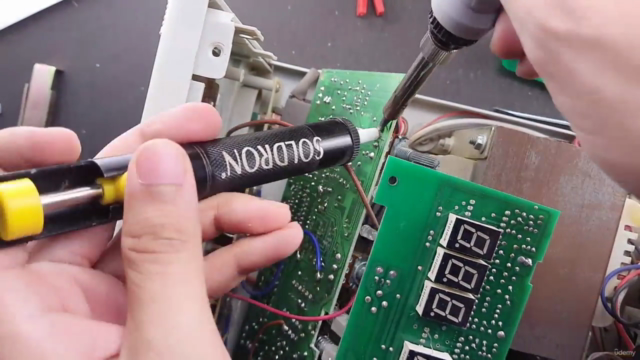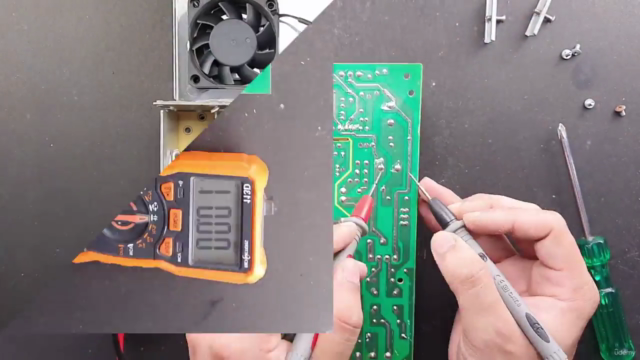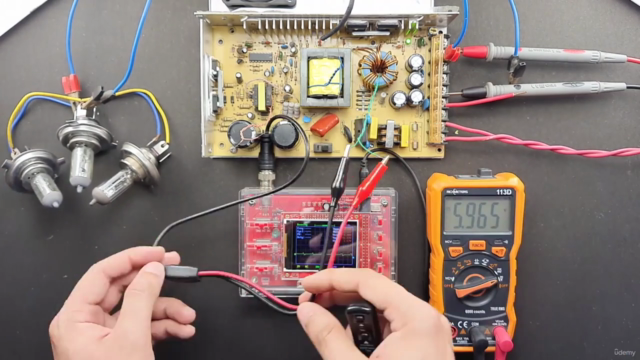Learn to Repair & Troubleshoot Electronics

Why take this course?
Course Title: 🚀 Learn to Repair & Troubleshoot Electronics with Shubham Tiwarि!
Headline: 🛠 Master the Art of Electronic Troubleshooting and Repair!
Description:
Welcome to the ultimate online course where you can turn your curiosity for electronics into a hands-on skill set! Whether you're an electrical engineer, a tech enthusiast, or someone who loves the challenge of fixing gadgets, this course is designed to take you from beginner to proficient in troubleshooting and repairing electronic components.
Why Take This Course?
- Prevent Catastrophic Failures: Avoid costly repairs and prevent the complete breakdown of electronic devices by learning to identify issues early on.
- Cost-Effective Solutions: Save money by fixing your own electronics instead of always resorting to expensive replacements or professional services.
- Invaluable Skill Set: Gain a set of skills that not only makes you more employable in the tech industry but also empowers you to tackle any electronic malfunction with confidence.
Course Highlights:
- Comprehensive Learning: Dive into the world of electronics repair with a structured curriculum developed by an experienced course instructor, Shubham Tiwaric.
- Real-World Practice: Apply theoretical knowledge to practical scenarios using your own electronic devices or parts you've collected.
- Hands-On Approach: Get ready to roll up your sleeves and dive into the process of troubleshooting by disassembling, diagnosing, and fixing real electronics.
- In-Depth Analysis: Learn about various faults, how to isolate them, and the corrective measures needed to restore devices to their optimal performance.
What You'll Learn:
-
Fundamentals of Electronics: Understand the basics of electronic components and how they interact within circuits.
-
Troubleshooting Techniques: Develop a systematic approach for identifying and solving problems in electronics.
-
Repair Skills: Learn how to safely repair electronic devices, including common issues like short circuits, power supply problems, and more.
-
Testing Equipment: Familiarize yourself with the tools of the trade, such as multimeters, oscilloscopes, and soldering irons.
-
Practical Exercises: Put your skills to the test with hands-on projects that challenge you to apply what you've learned.
Who This Course Is For:
- Aspiring electronics technicians or engineers who want to build a solid foundation in repair and troubleshooting.
- Enthusiastic hobbyists, DIYers, and makers who love tinkering with devices.
- Anyone interested in electronics who wishes to reduce the dependency on external repair services.
Enroll Now!
Embark on a journey of discovery and empowerment. With each module you complete, you'll gain more confidence and skill, turning potential electronic emergencies into manageable challenges. Enroll in "Learn to Repair & Troubleshoot Electronics" today and start transforming your curiosity into expertise! 🎓✨
Course Gallery




Loading charts...
Comidoc Review
Our Verdict
Though this course emphasizes practical troubleshooting methods and covers essential electronic components in depth, audio quality inconsistencies and thick accents make understanding lessons difficult. While the course includes real-life examples for repair situations, it would benefit from more visual aids—especially to complement lessons regarding specific components—and stricter editing to optimize information density.
What We Liked
- Covers general troubleshooting steps to narrow down faults in electronics
- In-depth explanations of testing various components like MOSFETs, transistors, and IGBTs
- Practical approach with real-life examples for troubleshooting and repairing electronics
- Highlights the usage of different tools and equipment to find faults
Potential Drawbacks
- Inconsistent audio quality; thick Indian accent makes understanding lectures challenging
- Autogenerated captions are inaccurate, causing confusion for learners
- Lack of visual aids, such as diagrams, for certain components like transistors
- Content appears long-winded and could benefit from better editing to improve information density